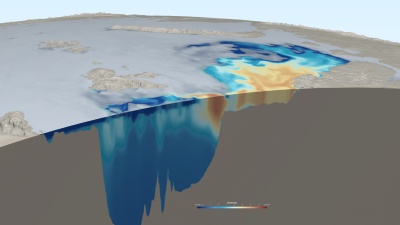On the Interactions Between the Arctic Mediterranean and the Atlantic Meridional Overturning Circulation
The Atlantic Meridional Overturning Circulation (AMOC) is tightly linked to the Arctic Ocean. This review summarizes recent progress that has been made in our understanding of the two-way interactions between these important elements of the climate system, and outlines some remaining challenges.
Both the AMOC and Arctic are projected to change dramatically in a warming climate. Understanding the mutual interactions between these important elements of the climate system is critical for our ability to project the future of our Earth system.
The Atlantic Meridional Overturning Circulation (AMOC) plays a significant role in the global climate system, and its behavior in a warming climate is a matter of significant concern. The AMOC is thought to be driven largely by ocean heat loss in the subpolar North Atlantic Ocean, but recent research increasingly emphasizes the importance of the Arctic Mediterranean for the AMOC. In turn, the AMOC may influence the Arctic heat budget through its impact on poleward heat transport. Hence, understanding the processes that link the AMOC and the Arctic is critical for our ability to project how both may evolve in a warming climate. In this paper we review some of the recent research that is shaping our thinking about the AMOC and its two-way interactions with the Arctic.

